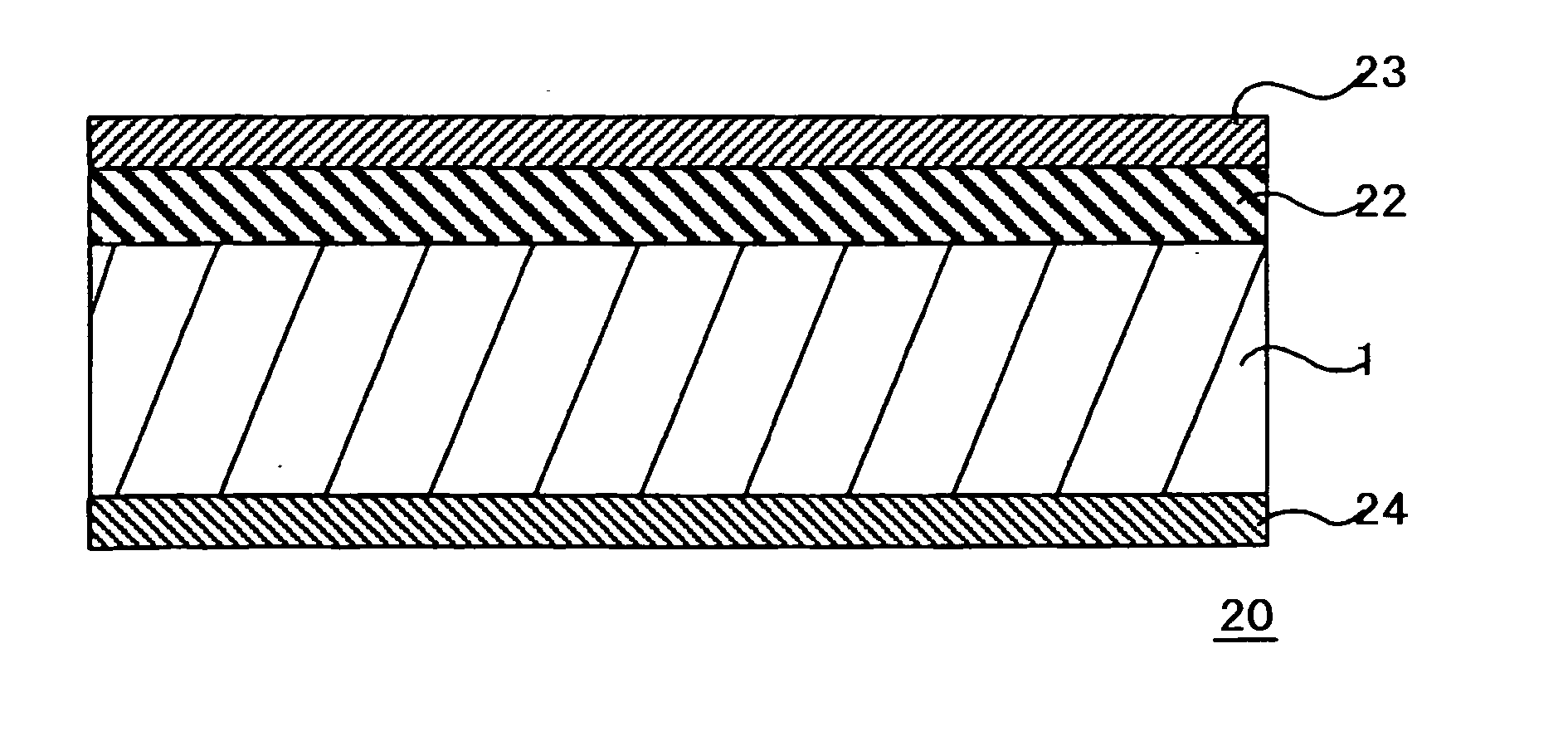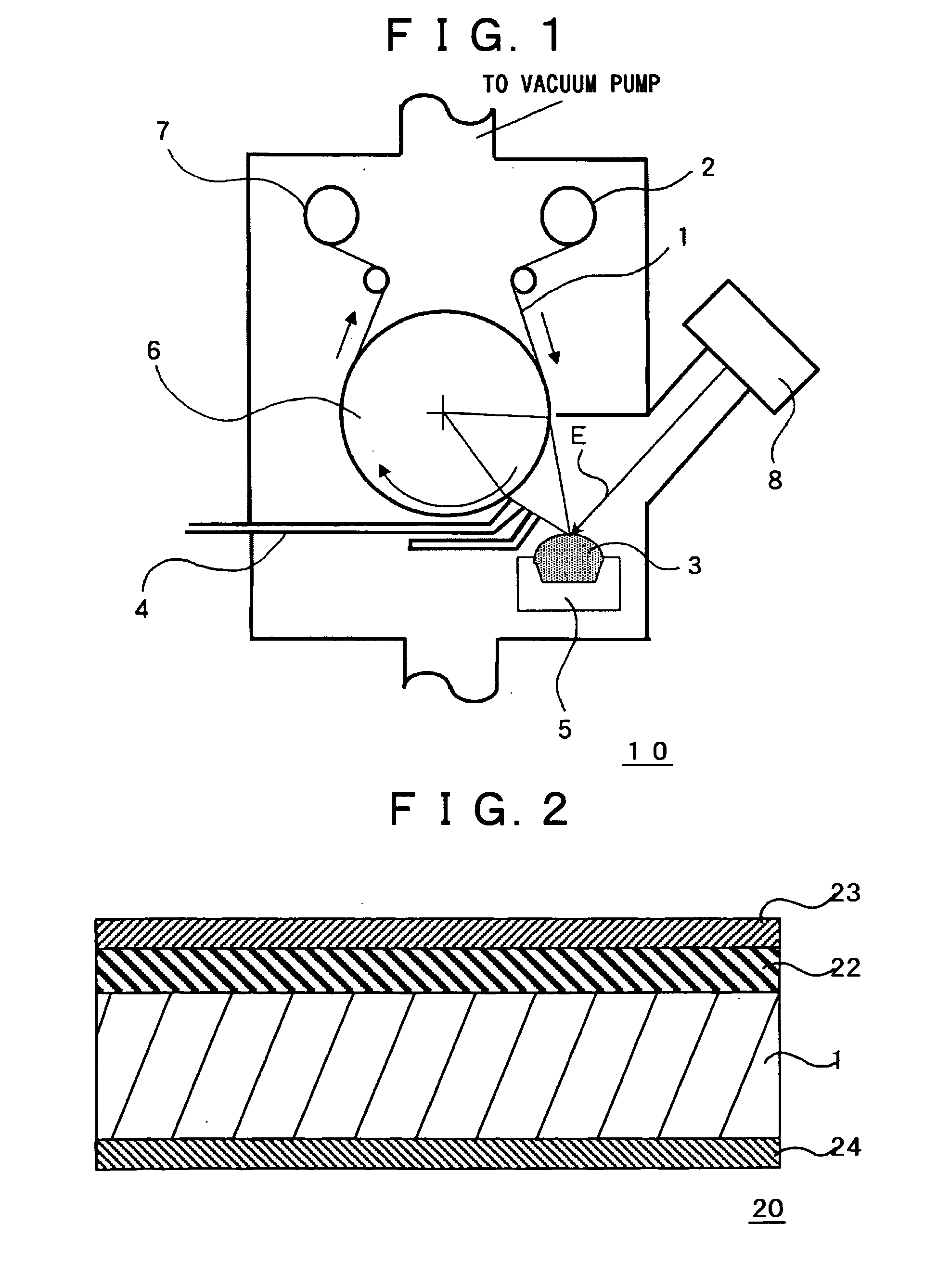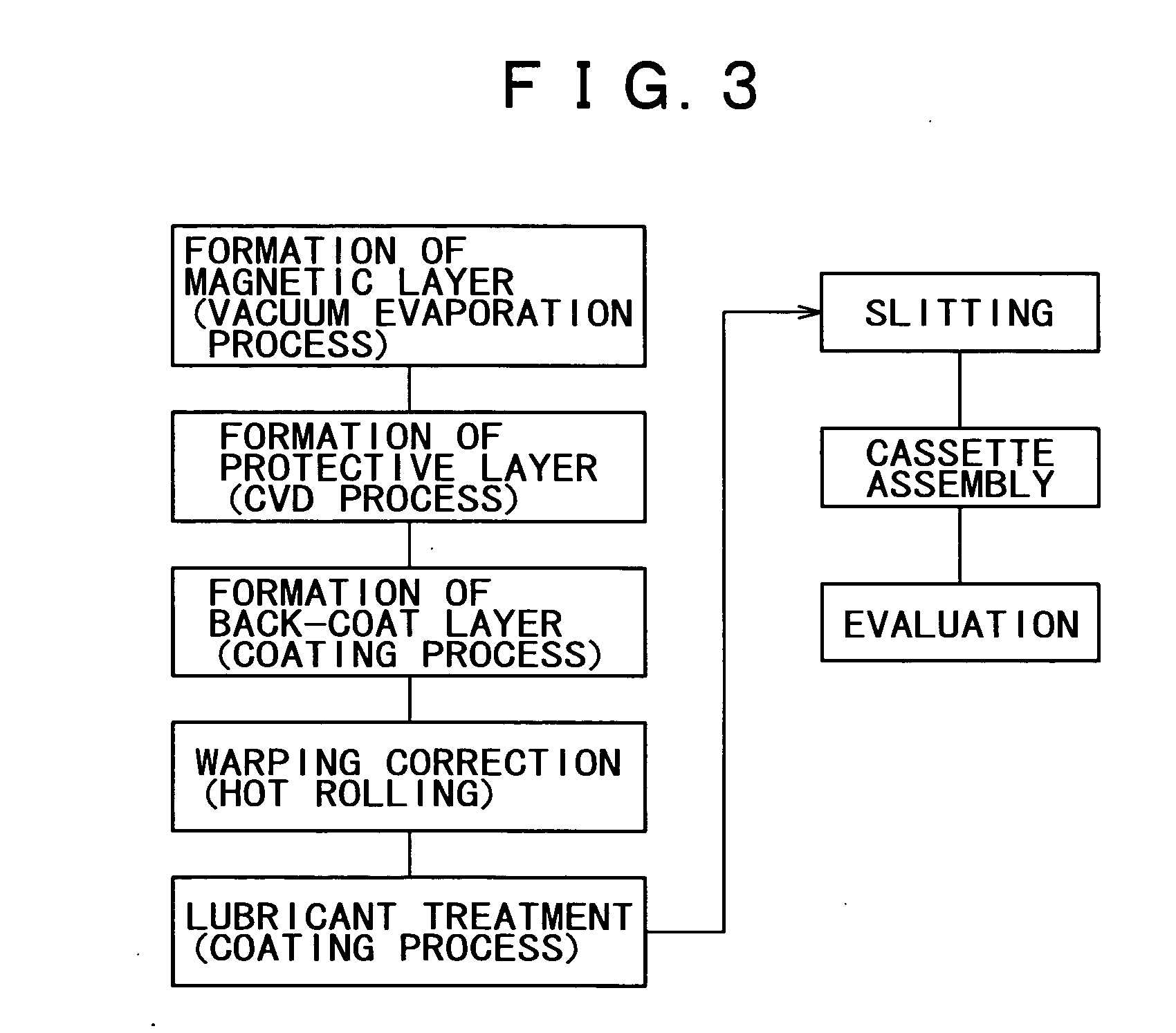Magnetic recording medium and method of fabricating the same
a magnetic recording medium and large-capacity technology, applied in the direction of instruments, solid-state diffusion coatings, superimposed coating processes, etc., can solve the problems of reducing the output of the magnetic layer composed of metal magnetic thin films, increasing noise, and limitation in increasing output, so as to reduce the block error rate, suppress film oxidation, and high recording density
- Summary
- Abstract
- Description
- Claims
- Application Information
AI Technical Summary
Benefits of technology
Problems solved by technology
Method used
Image
Examples
examples
[0057] The following paragraphs will describe specific experimental results with respect to Examples and Comparative Examples of the magnetic recording medium of the present invention, wherein the present invention is by no means limited to the Examples described below.
examples 1 to 11
Comparative Examples 1 to 11
[0058] The magnetic recording medium having the layer configuration shown in FIG. 2 was fabricated according to a fabrication process flow shown in FIG. 3. A polyamide film, product of TORAY Industries, Inc. of 1 m wide and 10,000 m long was used as the non-magnetic substrate 1, and set on the continuous-windup-type vacuum evaporation apparatus as shown in FIG. 1. The inner space of the vacuum evaporation apparatus 10 was evacuated to a degree of vacuum of approximately 10−3 Pa, and a Co metal magnetic film was formed on the non-magnetic substrate 1 by the continuous oblique-angled vacuum evaporation process, while respectively controlling the travel speed of the non-magnetic substrate 1 and the amount of introduced oxygen from sample to sample as listed in Table 1 below.
TABLE 1Travel speed ofAmount ofnon-magneticintroduced oxygensubstrate duringduring vacuumvacuum evaporationevaporationSample(m / min)(liter / min)Comparative2304.0Example 1Example 14.3Exam...
PUM
| Property | Measurement | Unit |
|---|---|---|
| Speed | aaaaa | aaaaa |
| Speed | aaaaa | aaaaa |
| Force | aaaaa | aaaaa |
Abstract
Description
Claims
Application Information
 Login to View More
Login to View More - R&D
- Intellectual Property
- Life Sciences
- Materials
- Tech Scout
- Unparalleled Data Quality
- Higher Quality Content
- 60% Fewer Hallucinations
Browse by: Latest US Patents, China's latest patents, Technical Efficacy Thesaurus, Application Domain, Technology Topic, Popular Technical Reports.
© 2025 PatSnap. All rights reserved.Legal|Privacy policy|Modern Slavery Act Transparency Statement|Sitemap|About US| Contact US: help@patsnap.com



